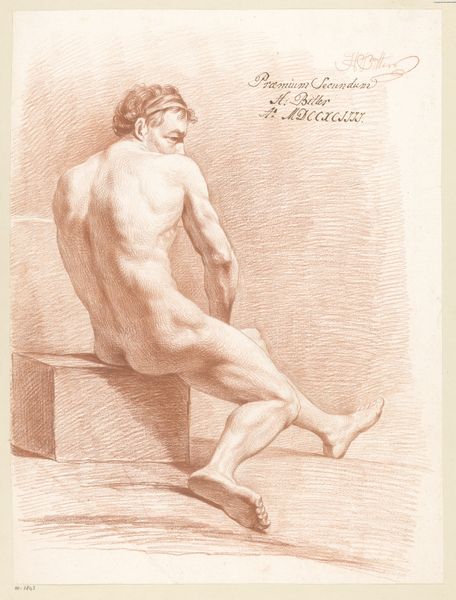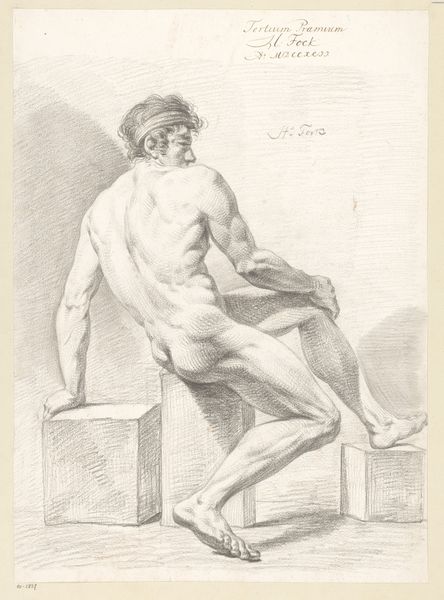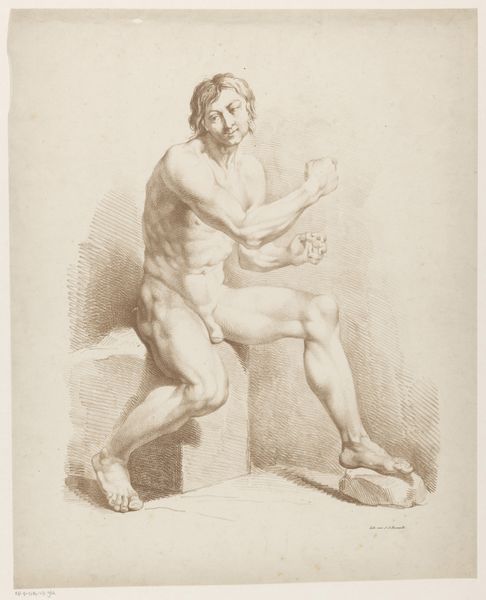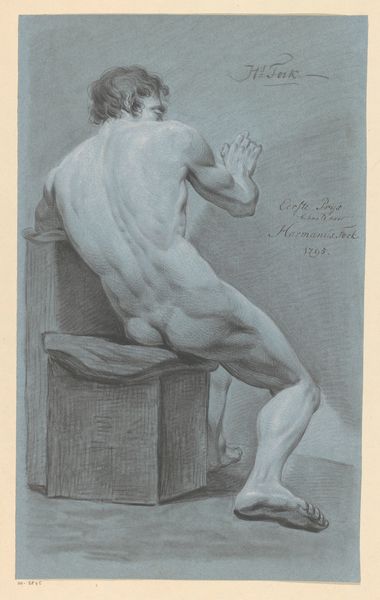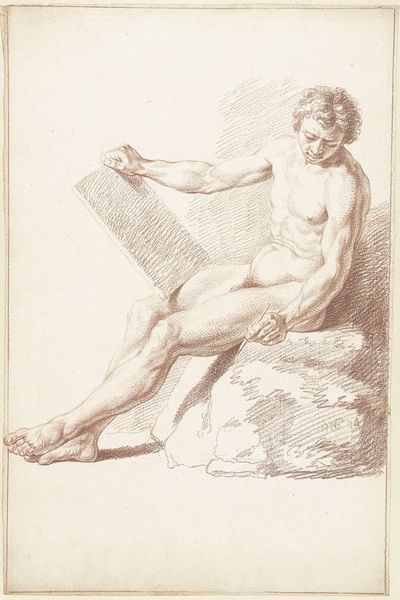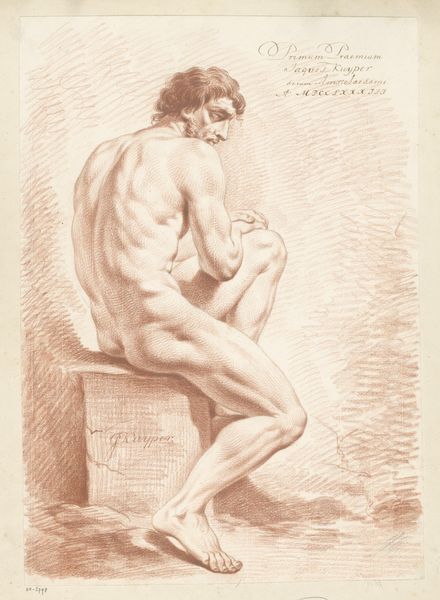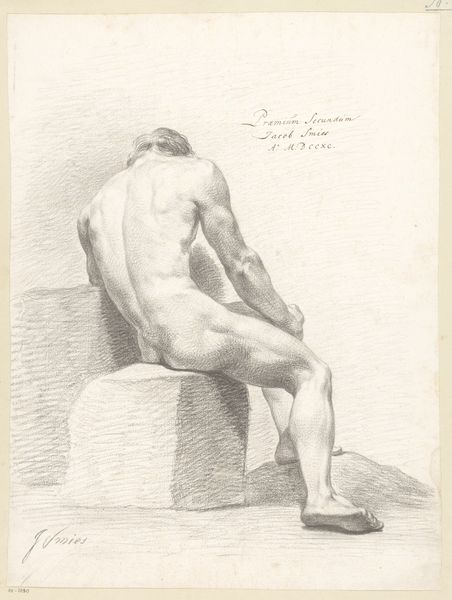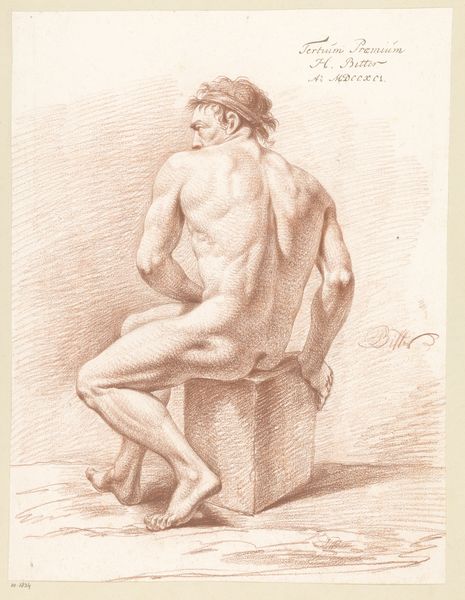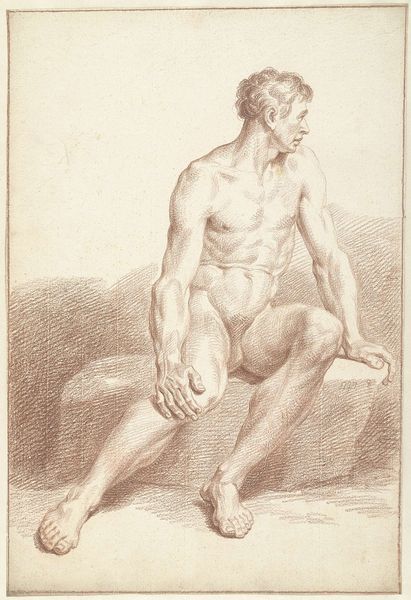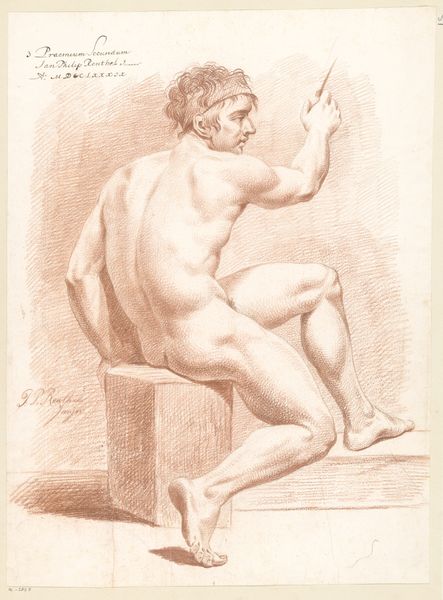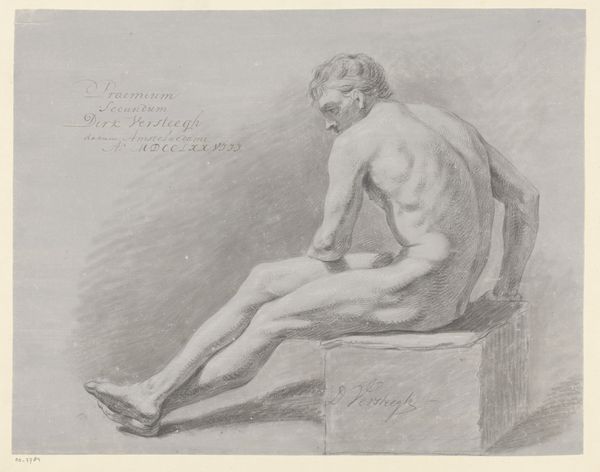
Zittend mannelijk naakt, op de rug gezien (3e prijs 1793) Possibly 1793
0:00
0:00
drawing, pencil
#
pencil drawn
#
drawing
#
neoclacissism
#
pencil sketch
#
figuration
#
pencil drawing
#
pencil
#
line
#
academic-art
#
nude
Dimensions: height 533 mm, width 410 mm
Copyright: Rijks Museum: Open Domain
Editor: This is "Zittend mannelijk naakt, op de rug gezien," or "Seated Male Nude, Seen From the Back," a pencil drawing by Jacob Ernst Marcus, possibly from 1793. It's… interesting. Very academic, but almost vulnerable in its depiction. What do you see in this piece? Curator: It’s compelling, isn't it? I see a study, not just of the male form, but of power and its performance within the context of late 18th-century societal norms. This was a period deeply invested in ideals of masculinity linked to citizenship and military prowess, drawn from a very selective reading of antiquity. Editor: Right, like Neoclassicism reviving the heroic male figure? Curator: Precisely, but look at the pose – he's seated, his back turned. Is this subversion? A vulnerability permitted only within the artistic academy, or perhaps a commentary on the male gaze itself? Where is the gaze directed? His or ours? Editor: Ours, I think. We are clearly meant to see *him*. Do you think there's any intentional play on the concept of spectatorship at work here? Curator: Absolutely! Marcus places the viewer in a position of authority. But let's also consider *whose* gaze would be legitimized at the time? Think about class, gender, race. Not everyone had equal access to the right to observe or represent bodies, which connects directly to structures of power. Who gets to be seen, and by whom, really matters. Editor: I see. It’s not just a nude study; it’s a statement about who has the right to look and be looked at. Curator: Exactly! It's in those seeming classical representations of beauty that the politics of identity are laid bare, then and now. It's quite remarkable, really. Editor: Thanks. I didn't realize there was so much going on under the surface of this academic sketch! Curator: It’s a reminder that art always exists within, and speaks to, a much wider social and political conversation.
Comments
No comments
Be the first to comment and join the conversation on the ultimate creative platform.
